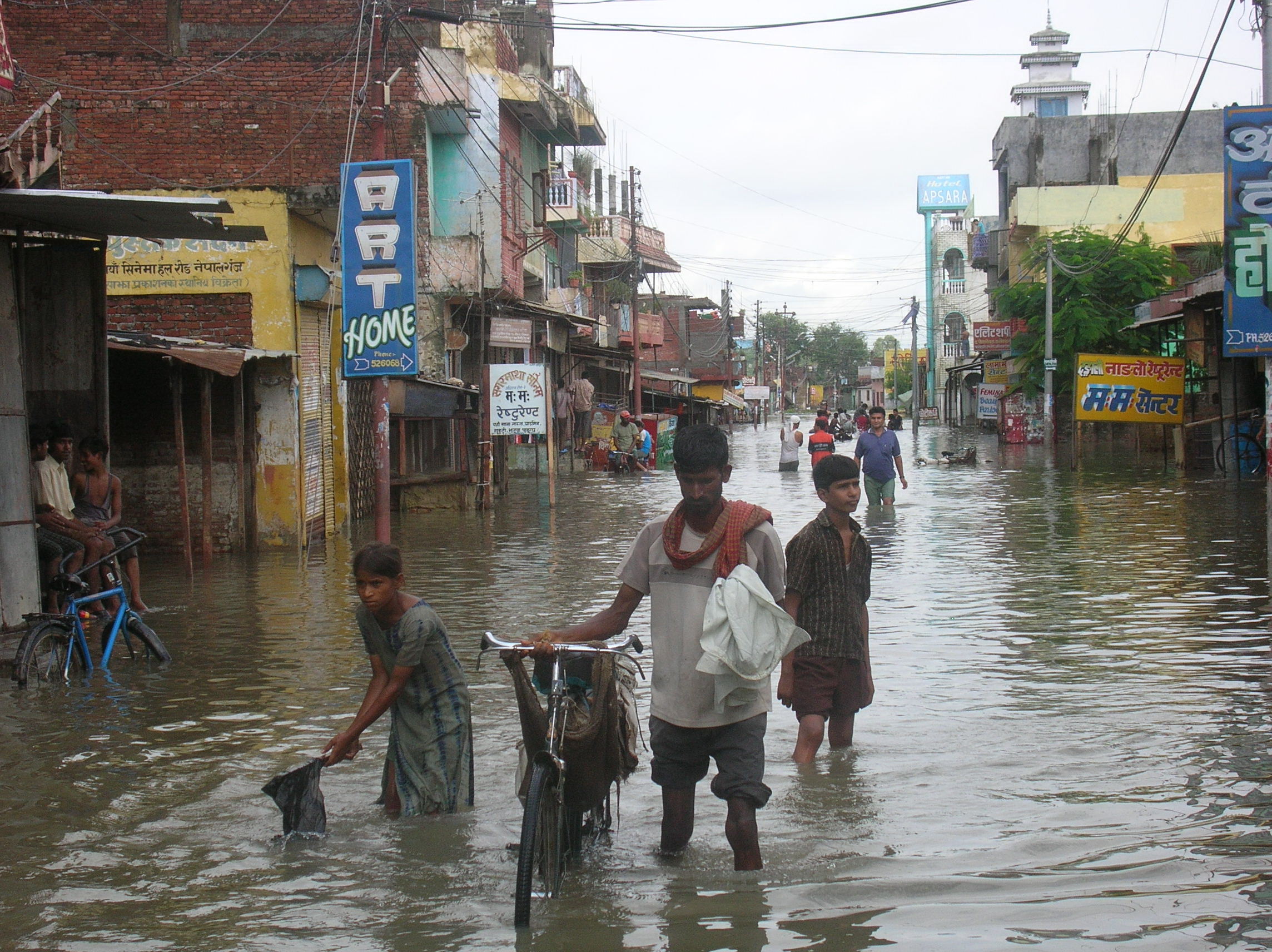Serious flooding in the lowland Terai region of southern Nepal has subsided after nearly three months of torrential rain, but there is an urgent need for humanitarian relief for those affected, local and international relief agencies told IRIN on 11 September.
According to the latest statistics from Nepal’s Ministry of Home Affairs, the death toll caused by flooding, and to a lesser extent landslides, has reached 185. About 580,000 people in 49 out of the country’s 75 districts have been affected.
Hardest hit was the Terai, especially in western and central areas, according to Nepal Red Cross Society (NRCS), the leading local organisation responsible for relief distribution.
“The most vulnerable are the farmers… who have lost their arable land and crops,” said Sanjeev Kafle, head of the NRCS disaster unit. The Terai is Nepal’s main agricultural area and serves as a bread-basket for the country’s estimated 27 million people.
According to a recent joint flood assessment report by the UN Children’s Fund (UNICEF), the World Food Programme (WFP) and Save the Children Alliance, the worst impact was on livelihoods and housing.
The report said the poorest, most marginalised and landless communities - like the Dalits, Madhesi, Tharu, Muslims and Janjati - were worst affected.
The fact that vegetable prices had more than doubled was also putting basic food items beyond the reach of these people, and they needed urgent aid, relief workers said.
Aid agencies are concerned food security might worsen in the coming months. They point out that up till now the affected population has been borrowing heavily to satisfy their food needs.
Female-headed households
Also badly affected were female-headed households. They need urgent help especially to repair and rebuild their homes, said NRCS officials.
“The women already have difficulty making a living to support their families and are now tending to suffer more,” Vincent Omuga, humanitarian affairs officer with the UN Office for the Coordination of Humanitarian Affairs in Nepal, told IRIN.
“Relief and humanitarian agencies are working actively to provide support to these families to restructure their lives,” Omuga said, adding that cooperation with government aid efforts was also good.
According to UN agencies and Save the Children Alliance, half of the displaced families have now returned home, but local relief workers fear they have, in fact, nothing to return to.
nn/at/ar/cb
see also
WHO concerned at increasing risk of post-flood diseases
This article was produced by IRIN News while it was part of the United Nations Office for the Coordination of Humanitarian Affairs. Please send queries on copyright or liability to the UN. For more information: https://shop.un.org/rights-permissions





